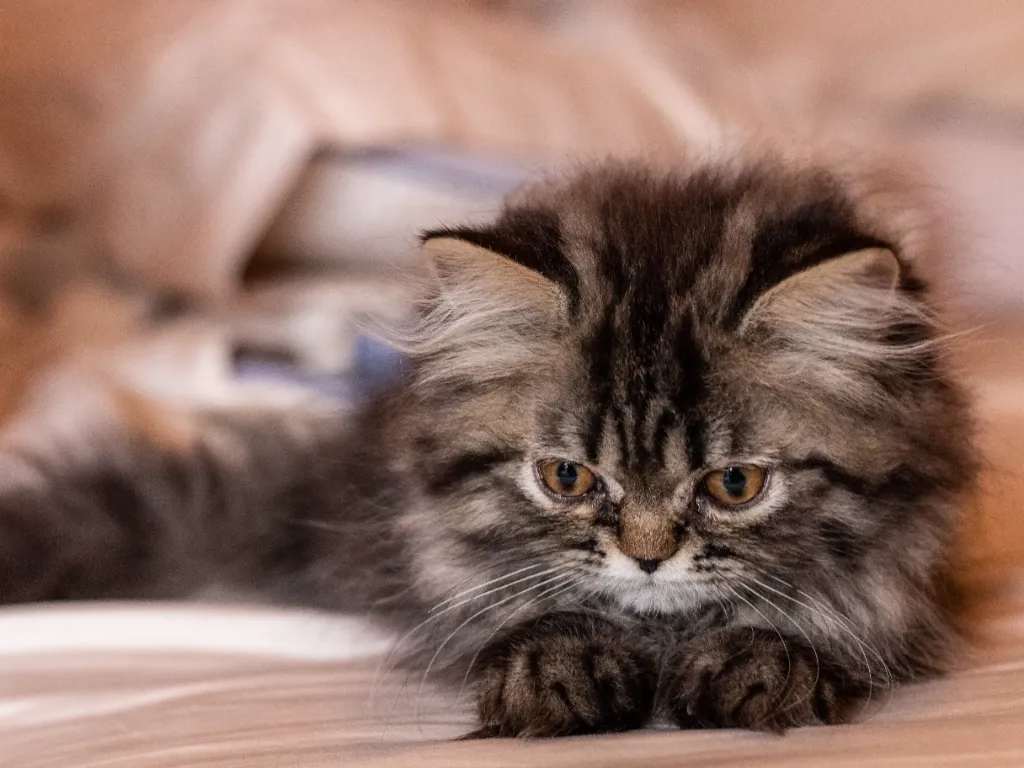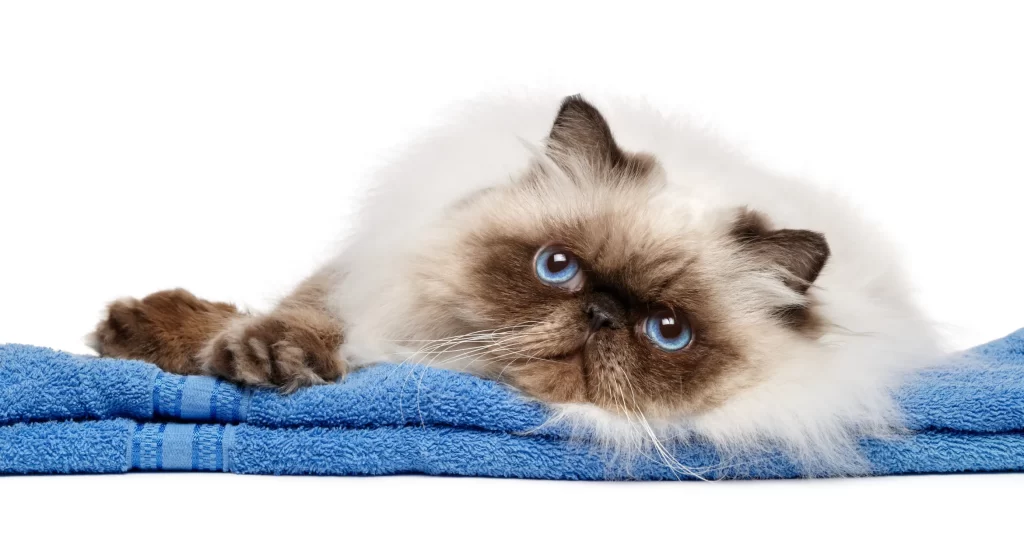Fluffy and with big round eyes and cute flat faces, Persian cats have been charming their way into human homes for thousands of years. They have been one of the most popular cat breeds for many decades.
However, their popularity means they are not cheap. How much does a purebred Persian cat cost?
The average cost of a Persian cat ranges between $500 to $5,000. The final pricing depends on the source, health status, breeder reputation, and the color of the kitten itself. There are also associated costs, such as feed and litter. Demand for Persian cats may sometimes spike, pushing the prices higher.
In this post, we will explore how much a Persian kitten costs. We will also explore the factors that would determine the pricing of the kitten and the associated costs you need to budget for.
Persian Cat Cost
Persian cats demand a high price, although they generally cost slightly less than other premium breeds, such as Maine Coon, Sphynx, or Munchkin.
The cost of purebred cats can vary widely depending on various factors, including the cat’s lineage, pedigree, coat quality, color, age, location, and whether it comes from a reputable breeder. On average, Persian cats can range from around $500 for unregistered pet stock to $5,000 or more for kittens from championship lines – a hefty price tag indeed!
Of course, there are options to go bottom-feeding and look for cheap Persian kittens. These can be lower but do understand that you are entering a gray zone here. These kittens often come with hidden issues you may not notice until much later.
Cheap Persian Kittens – Buyer Beware
Buying a cheap Persian kitten might seem like a good deal initially, but there are several potential pitfalls and risks associated with doing so. Keep in mind the old adage – “You get what you pay for”!!
Here are some of the risks of getting a low-cost kitten from an unknown source:
- Health Issues: Cheap Persian kittens are often bred by backyard breeders or in substandard conditions. These kittens might not receive proper veterinary care, vaccinations, or socialization, leading to a higher risk of health problems and genetic disorders. This can result in significant veterinary bills and emotional distress for both you and the cat.
- Genetic Problems: Reputable breeders carefully select breeding pairs to minimize the risk of passing on genetic disorders common in Persian cats, such as respiratory and dental issues, eye problems, and kidney disease. Cheap kittens are more likely to come from breeders who don’t prioritize genetic health, increasing the likelihood of inheriting these issues.
- Poor Socialization: Kittens that aren’t properly socialized during their early weeks of life can develop behavioral problems such as fearfulness, aggression, and anxiety. Cheap kittens might not have received the necessary human interaction and exposure to different environments, leading to these issues.
- Unethical Breeding Practices: Many cheap Persian kittens come from breeders who prioritize profit over the well-being of the cats. They might engage in overbreeding, improper care, and inadequate living conditions, contributing to the cycle of poor animal welfare.
- Hidden Costs: While the initial cost of the kitten might be low, you could end up spending much more in the long run on veterinary care, medications, and other treatments to address health issues that arise due to poor breeding practices.
- Emotional Toll: Dealing with a sick or behaviorally troubled kitten can take a toll on your emotions and stress levels. You might have to make difficult decisions about the cat’s health and well-being.
- Time and Effort: Cats with health or behavioral issues require extra time and effort to care for properly. This can disrupt your daily routine and lifestyle.
- Supporting Unethical Practices: By purchasing from unethical breeders, you inadvertently support their practices and contribute to the cycle of poor breeding and animal welfare.
To avoid these pitfalls, it’s highly recommended to research and buy from reputable breeders who prioritize the health and well-being of their cats.
A good breeder will invest time and resources into responsible breeding practices, proper veterinary care, socialization, and creating healthy and well-adjusted kittens. While the upfront cost might be higher, the long-term benefits for you and the cat are invaluable.

What Determines The Final Cost Of A Persian Cat?
You may find the price range of $500 to $5,000 a little wide to work with. After all, these kittens come with four legs and a fluffy body, and they meow just fine, right? Why such a huge price difference?
This is because many factors could influence the final pricing of a Persian kitten. Here are some to think about:
Source
The price of a Persian cat will vary widely, depending on where you get them. If you want nothing but the best, you will usually go to a premium, highly reputable breeder. Be prepared to pay top dollars for a Persian kitten here.
If you do not mind shopping at a lower price range, there are always regular and backyard breeders you can go to. Kittens from these breeders may not be raised to a high standard, so you may need more homework.
Finally, to keep costs to an absolute minimum, consider adopting instead. There may be a local shelter with Persian kittens or cats you can take home. Choices may be limited, but the savings can be huge! The adoption fee may be less than $200.
Health Status
The rule here is simple – the healthier your kitten, the more it will cost. You also need to pay for some physical procedures when you purchase a kitten, such as neutering and spaying.
Generally, the best, most healthy kittens come to you well-stacked with health documents. These include, but are not limited to:
- Veterinary Report: Your kitten should have a full veterinary report. In it, you should see a professional veterinarian inspecting the kitten for possible health issues and giving it a clean bill of health.
- Vaccination History: Kittens are like babies; they need regular jabs to stay healthy. A properly vaccinated kitten would save you much time and trouble once you get it.
- Genetic Test: This helps to confirm the genetic conditions of the kitten and reveal any possible ‘time bombs.’ If the kitten does not have one, pay for the test! You want peace of mind that the cat will remain healthy long into the future.
- Neutering or Spaying Report: This may be optional, but a reputable and proper breeder will try to neuter or spay the kitten before offering it to you. In most cases, there should be a report recording the procedure.
Breeder Reputation
Many Persian breeders are in the market today since cats are popular pets in many homes. However, not all are the same, and you will want to know the type and reputation of the breeder you are getting your kitten from.
Reputable breeders with high standards will cost more as they try to provide the best for the kitten. The kitten receives high-quality medical care and nutrition. This eventually reflects in the bill.
The most expensive breeders would not just be highly reputable, but they also are proven breeders. They usually participate in prestigious cat shows and have produced championship pedigree Persian cats. Kittens with lineage to these winners will cost a lot.

Color
Persian kittens come in all sorts of coat color and patterns. You may pay more or less for your kitten, depending on your preference.
Pure white Persian cats with blue eyes are in high demand, so these tend to come with a higher price tag. Some coats, such as blue, are also popular and may cost you more.
The most popular pattern on Persian kittens is tabby, but there are less common patterns, such as Calico or Tortoiseshell. These may cost more as well. Persian kittens with blue and copper-colored eyes are also highly prized and can cost more.
Age
Age is a significant factor that can influence the cost of a cat. Generally, kittens are more expensive than older cats that are looking for a new home. Here’s how age impacts the cost:
- Kittens: Kittens are typically in higher demand due to their adorable and playful nature. They also have a longer lifespan ahead, which can make them more appealing to potential owners. The cost of kittens reflects the initial investment required for their care, including vaccinations, early socialization, and veterinary checks.
- Adult Cats: Older cats that are looking for a new home might have a lower price tag. This is because they might be less sought after than kittens, and potential owners might be hesitant due to concerns about bonding or adapting to a new environment. However, adopting an adult cat can be rewarding, as their personalities are more developed, and they often require less intensive care compared to kittens.
Gender
Unsterilized female Persian cats may cost more than male, since the females can reproduce and have kittens. This reproductive potential can make them more valuable to breeders interested in expanding their breeding programs or producing litters.
As a result, breeders might charge a higher price for unsterilized females with breeding potential, as they have the potential to generate income through kitten sales.
Supply & Demand
Finally, the cost of Persian cats can also be affected by the supply and demand situation in the market. Here, the supply-demand curve applies; when there is more demand than supply, prices increase, and vice versa.
Many things can trigger a sudden spike in demand for Persian kittens. These could range from movie appearances, or sudden popularity on social media. These could trigger a rush for these kittens and drive prices up. Also, Prices are likely to be higher in regions where there are few breeders around, like rural areas.
What Are The Other Costs Of Owning A Persian Cat?
Aside from paying for the kitten, there are also other associated costs with owning a Persian kitten. These include, but are not limited to:
- ID Tag & Collar ($5 to $20): ID tags are usually worn on your cat’s neck. It helps people to identify the cat as ‘owned’ and not a stray.
- Microchipping ($5 to $30): A microchip is a small device implanted into your kitten. It helps hospitals or shelters to identify your cat and you as the owner.
- Toys ($10 – $30): Kittens love to play, and toys can keep them occupied and happy.
- Food & Water Bowls ($10 – $50): Your cat needs a proper bowl for food and water. Proper bowls make it easy to eat and drink.
- Carrier ($10 to $200): In some places, carrying your cat in a car without it is illegal. Get a good one, so you can easily carry your kittens wherever you need.
- Litter Box & Scoop ($25 – $75): A high-quality litter box and scoop makes it easy for your kitten to ‘do its thing’ and for you to manage it.
- Grooming (Starts From $30): Persian cats have thick coats, so grooming must be done regularly to prevent matting. They generally will cost more compared to other short-coated cats.
- Food and litter ($50 – $100): Feed your Persian well, and it will live a long, quality, happy life. Good, high-quality litter also helps your cat to pass stools well and prevents your house from having that ‘cat’ smell.
- Health care: Your cat needs life-long healthcare. Normally, for most cat breeds we estimate $100 – $300 annually averaged out over the lifespan of the cat. However, Persian cats are known to be prone to several serious health conditions, including kidney disease, respiratory problems, and progressive retinal atrophy, meaning that on average the cost of veterinary care for these cats tends to be much higher than. Getting pet insurance for these kittens is highly recommended.

Persian Cats Are Worth The Money
There is a reason why Persian cats are one of the most popular around. They look gorgeous with their gentle round face and long coats, with the added bonus of having a gentle nature. The price of Persian cats can be high, but people are willing to pay a lot for these furballs of love without any regrets.
Owning one of these beautiful cats is a long-term commitment that goes beyond the initial purchase cost. It requires your time, emotions, and financial resources. The allure of their luxurious coat, captivating eyes, and gentle demeanor is undeniable, but owning a Persian cat necessitates investing in their proper care and well-being.
The joy and companionship they provide are priceless, making the investment worthwhile. If you’ve decided on a Persian cat, embrace the journey with an open mind and prepare for a beautiful friendship filled with purrs and cuddles.
If you are reading this post, chances are you are considering owning a Persian kitten. In this case, check out our other Persian cat articles: the health problems of Persian cats and what a Blue Persian cat is.


